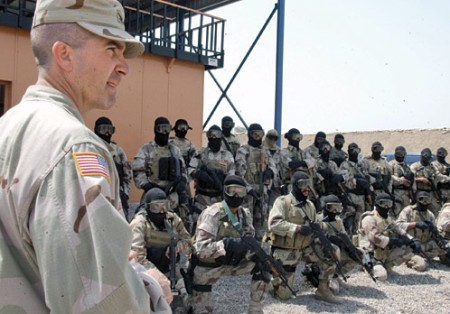Early in the emergence of Iraq and Afghanistan war-writing as a recognizable genre, the center-of-gravity, to use military-speak, shifted from interest in events experienced on deployment and the battlefield to the difficulty of the homecoming and reintegration into civilian life. At first, this interest was focused on the individual veteran, often wracked by guilt, as he or she tried to find their way post-service. Later, interest in veterans as a cohort emerged, as they represented a demographic block within the greater populace asserting their views and needs in the wake of the end of fighting in Iraq and Afghanistan, the election of President Trump, Covid, and all else. The first theme has found countless expression in fiction, poetry, and memoir, with Phil Klay’s Redeployment stories most famously addressing the veterans’ search for equilibrium and purpose in a society that little understood them. The second theme plays out daily in the news and on social media, but has yet to find robust expression in imaginative literature, though Matt Gallagher’s novel Empire City has admirably pioneered exploration of the contentious ways veterans position themselves, and are positioned by others, for recognition in the cultural and political sphere, as well as the consequential and cumulative effect of prolonged overseas war-faring on the shape of everyday American life.
Recently, two events have given me opportunity to consider anew these trends. First, an offer from the Task & Purpose online veterans journal to review The Shot: The Harrowing Journey of a Marine in the War on Terror, the memoir of former-Marine Bill Bee, brought the theme of the struggling veteran back into focus. You can read the review here; in sum, Bee describes a ten-year journey post-deployment to settle down after the intense highs and lows of four deployments to Afghanistan. In the review, I don’t use Stacey Peebles’ prescient line about contemporary war-lit’s dominant narrative arc—the story of a veteran who thought he or she was prepared for what they might face at war, only to find out how wrong they were—but it well applies. Bee seems to have come to writing only recently. Though he describes being a big reader as a youth, he doesn’t portray himself as now or ever being a budding member of the vet-writing literati, nor does writing as a means of dealing with his troubles seem to have occurred to him as he cycled through a number of treatment programs for PTSD and TBI and various life-changes. The Shot is all the more interesting for that. Prompted into writing by co-author Wills Robinson, Bee conveys in The Shot an “as told to” feel characteristic of sports-star and entertainment-celebrity autobiographies. The clear retelling of battlefield events and home-front struggle is a bracing reminder of how intense was the fighting and how serious and long-lasting were the physical and emotional wounds.

Regarding the societal consequences of long-lasting war, I recently watched the play Thou Shalt Not, staged in New Brunswick, NJ (where I live) and written, directed, and acted in by Iraq and Afghanistan veteran J.M. Meyer (along with his wife and co-collaborator Karen Alvarado). The play concerns a famous 1922 double-murder and subsequent trial that took place in New Brunswick; Meyer and his acting troupe Thinkery & Verse recreate the events, as told mostly through the eyes of the daughter of one of the victims, with an added fillip of interest being that they stage the play in the actual church where both victims worshipped. Nothing in the play directly references World War I, and it might be slightly specious to suggest that the murder in its time and the play now helps us understand the 1920s cultural climate as it was influenced by World War I, to say nothing of the current post-GWOT era. But perhaps not entirely so. The case, known as the Hall-Mills murder, was interpreted in its time as a symptom of a society that in the go-go 1920s had lost its collective mind by, among others, F. Scott Fitzgerald, who incorporated elements of the case into The Great Gatsby, which has often been explained as the story of an America reeling in the social tumult occasioned by The Great War. Among the larger themes channeled in Thou Shalt Not are loss of community, religious hypocrisy, media frenzy, judicial bias, and class inequity, all of which have their counterparts today. Most of all, Thou Shalt Not’s interest in the daughter’s plight, left to cope with the disreputable life-events that led to her mother’s murder as they were bandied in the press for the better part of a decade, shrewdly reflects vet-writing’s preoccupation with post-trauma guilt and confusion.
I know J.M. Meyer (and have written about him here), but not well enough to say whether he consciously wrote contemporary war themes into his play. No matter the source, the artistic imagining on display in Thou Shalt Not is dazzling. Far from being a staid dinner-theater whodunnit, Thou Shalt Not is highly inventive, shot through with theatrical artifice and interesting casting and staging choices. Meyer immerses the audience into the proceedings at several points, and when spectators are left alone to contemplate the murders and trial they are exposed to a barrage of conflicting perspectives and often-spectacular recreations of events that trouble easy understanding while delighting the desire to be entertained. I’ve always been curious about veterans who are drawn to theater and film, especially in roles as playwrights, directors, and producers. In this line Myer reminds me of more well-known vet-dramatists such as Maurice Decaul, Benjamin Busch, and even Adam Driver (and now comes news that Veterans Writing Project founder Ron Capps is writing and staging plays, too). All are former infantrymen, now highly cerebral and creative artists, attracted to ensemble performative endeavor, and with little desire to tell simple stories in simple ways. What’s up with that?




















